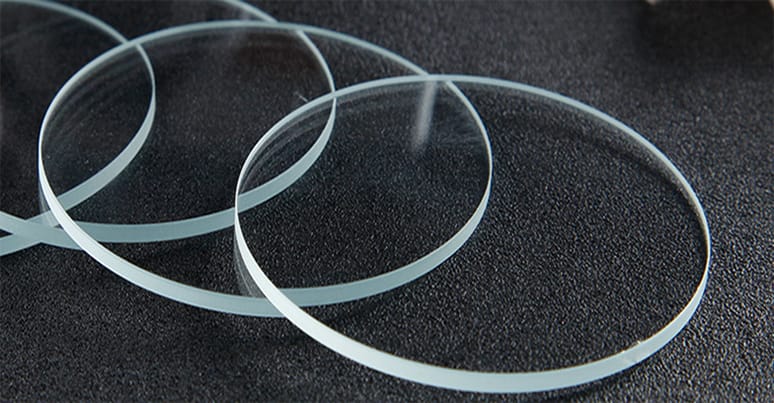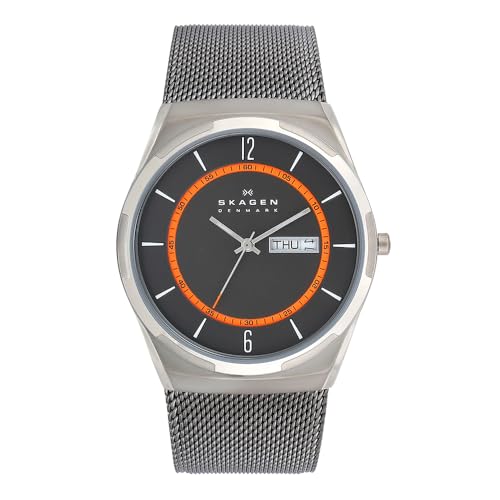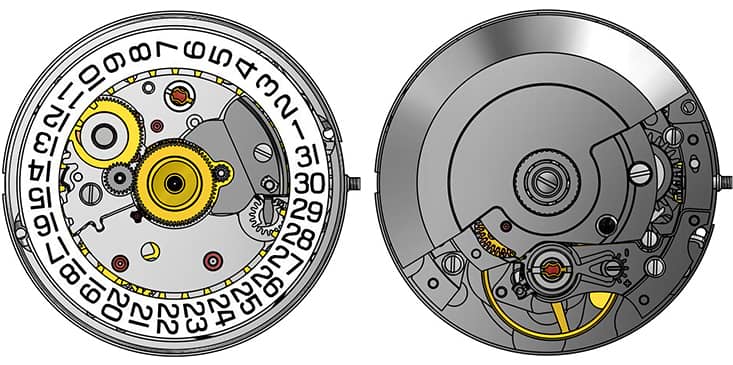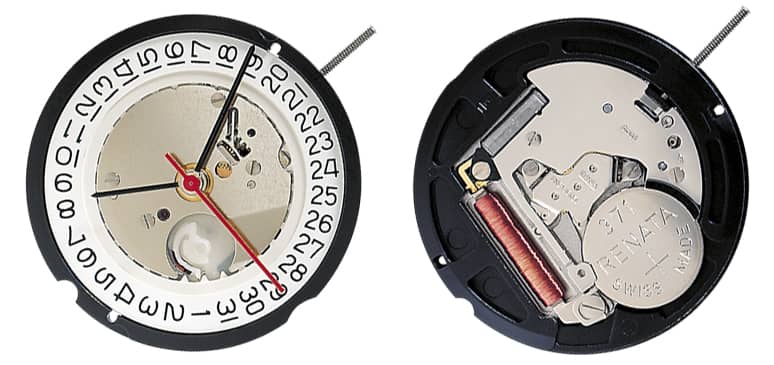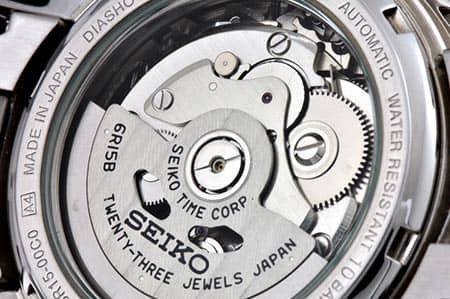Currently, there is a wide variety of watch crystals with varying degrees of hardness and different resistance properties to withstand impacts, scratches, pressure, or any other eventuality that the mechanism may encounter. Therefore, the choice of crystal will depend on the intended use of the watch.
Generally, watch experts classify the different types of watch crystals into three main groups: plexiglass, mineral crystal, and synthetic sapphire. However, these materials can be combined with each other or even with other materials to create new types of crystals that aim to take advantage of the benefits of each and minimize their flaws.
A good example of this is Seiko’s Hardlex crystal, which is a hybrid between sapphire and mineral crystal.
Índice de contenidos
Types of Watch Crystals
Next, we will focus on analyzing the strengths and weaknesses of the different types of watch crystals, taking into account the Mohs scale, which measures the hardness of different materials on a scale from 1 to 10, where diamond is the hardest material.
Plexiglass or Acrylic Crystal [3-4 MOH]
The classic plastic crystal used in cheaper watches is also the lightest and almost impossible to break. However, it is too soft and can be easily scratched, although it can also be easily polished.
Many diving watches use this type of crystal, even some high-end ones, because they do not break easily, which keeps the mechanism safe, which is the main objective. If they get scratched by a rock or any other object, the crystal can always be polished or replaced entirely since it is not expensive.
| Crystal | Acrylic |
| Movement | Solar quartz by Casio |
| Materials | Resin case and strap |
| Water Resistance | 100 meters |
| Special Functions | Chronometer, timer, alarm, LED lighting, solar charging, and universal time |
Mineral Crystal [5 MOH]
Mineral crystal is ordinary glass obtained by melting silicon or quartz sand. It offers greater scratch resistance than plexiglass but can still break relatively easily. However, modern mineral crystals are generally quite durable due to advances in the manufacturing processes.
When this type of crystal gets scratched, it can be polished, although the procedure is complicated and there are no guarantees of a successful outcome. Therefore, it is more common to replace the entire crystal, taking advantage of its relatively low cost.
| Crystal | Mineral |
|---|---|
| Movement | Quartz |
| Case Diameter | 40 mm |
| Case Thickness | 8 mm |
| Weight | 73 grams |
| Materials | Titanium case and stainless steel strap |
| Water Resistance | 5 ATM (50 meters) |
Hardlex Crystal [7 MOH]
Hardlex crystal is a special type of hardened glass developed by Seiko, which falls between mineral crystal and sapphire. It is harder than the former and more flexible than the latter. Therefore, it is more scratch-resistant than mineral crystal and more impact-resistant than sapphire.
There are different types of Hardlex crystals depending on the intended use of the watch. For example, Seiko 5 watches do not have the same Hardlex crystal model as Seiko Monster diving watches.
| Crystal | Hardlex |
| Movement | Japanese automatic |
| Caliber | Seiko 4R36 |
| Case Diameter | 43 mm |
| Case Thickness | 13 mm |
| Materials | Stainless steel |
| Water Resistance | 100 meters |
Sapphlex Crystal [8 MOH]
Sapphlex crystal is another type of hardened crystal patented by Seiko in the 1990s to enhance the resistance of mineral crystals. In this case, it is a laminated crystal that combines layers of sapphire with layers of mineral crystal.
In theory, it offers the best of both materials: the hardness of sapphire to resist scratches and the flexibility of mineral crystal for impacts.
The problem is that many of these crystals end up delaminating over time, meaning that the layers separate, rendering the crystal useless.
FlameFusion Crystal [8 MOH]
In this case, it is also a combination of sapphire and mineral crystal, but the laminating technique is not used. Instead, a fusion process is employed where both materials are combined at extremely high temperatures. The result is a new material that cannot delaminate.
FlameFusion crystal is almost as scratch-resistant as sapphire and highly resistant to impacts. It is used in some models of Invicta watches.
- El Invicta 0073 tiene una caja de acero inoxidable de 48 millimetros con una esfera azul
- Esta modelo funciona con un movimiento de Cuarzo preciso
- Resistencia a la presión de aqua de 20 bares
- Este modelo es parte de la colección Invicta Pro Diver - SCUBA
- 2 años de garantía Invicta
Krysterna Crystal [8 MOH]
Although originally patented for use in eyeglass lenses, Krysterna Crystal is also used by the Stührling Original brand in some of its models.
The principle is similar to that used in FlameFusion, but in this case, additional materials are added to make it even more resistant to scratches, although it still falls short of sapphire’s level of hardness. However, it performs better against impacts.
| Crystal | Krysterna |
|---|---|
| Movement | Automatic |
| Case Diameter | 47 mm |
| Case Thickness | 15 mm |
| Materials | Stainless steel case and leather strap |
| Water Resistance | 5 ATM (50 meters) |
Sapphire Crystal [9 MOH]
Sapphire crystal is commonly used in luxury watches. It offers a high level of visibility and transparency, as well as the highest scratch resistance among the different types of watch crystals.
Modern sapphire crystals are synthetic and much cheaper than natural ones since they can be mass-produced while maintaining the same physical properties.
In theory, being the hardest crystal, it is more prone to breakage from a strong impact. However, it is highly unlikely for a high-end watch with a sapphire crystal to break from such an impact. In reality, it is much easier to scratch ordinary glass than to break a sapphire crystal.
| Crystal | Sapphire |
| Movement | Japanese Automatic |
| Caliber | Seiko NH35 |
| Case Diameter | 44 mm |
| Case Thickness | 15 mm |
| Materials | Stainless steel |
| Water Resistance | 20 ATM (200 meters) |
Conclusion
As can be seen in each example, the type of crystal often does not have as much influence on the price as the brand itself. Therefore, it is important to consider the intended use of the watch throughout its lifespan and choose the one that best suits your needs.
In most cases, sapphire crystal tends to be the best option since it is virtually scratch-resistant, and dial abrasions are common. However, it is less likely to experience a strong impact that would break the crystal.
Of course, if you are looking for a watch for diving or extreme work, an easily repairable acrylic crystal may be a better option.
Related
Relojes.Wiki participates in the Amazon EU and Amazon US Associates Program, an affiliate advertising program designed to provide websites with a means to earn advertising fees by advertising and linking to Amazon.es, Amazon.com and Amazon.co.uk
As an Amazon Associate, I earn from qualifying purchases. More info.
Last update of links and images on 2025-12-21.

